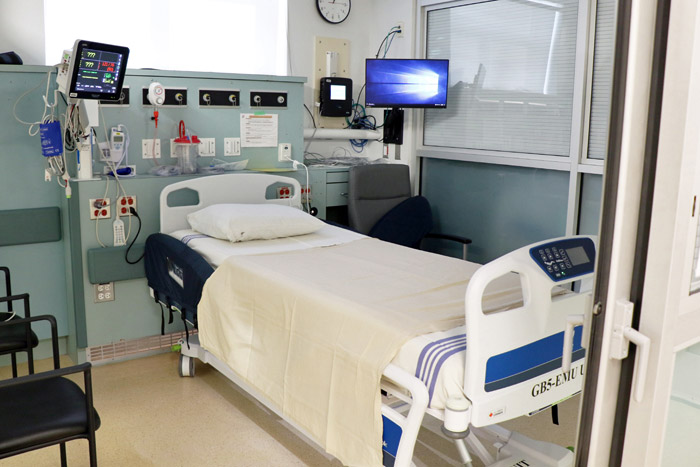The province has announced that people living with epilepsy can now access better treatment through a new epilepsy monitoring unit and an adjacent neurological recovery unit have both opened at Health Sciences Centre (HSC) Winnipeg.
“This new monitoring unit will ensure more Manitobans living with epilepsy can get the specialized care they need, close to home,” said Health, Seniors and Long-Term Care Minister Uzoma Asagwara. “The previous government shut down the epilepsy monitoring unit in 2019, leaving Manitobans with no option but to be referred out of province to receive this essential care, or not receive it at all. We’re taking a different approach, building our health system here in Manitoba, and ensuring that this care is always available when people need it.”
Most people with an epilepsy diagnosis can successfully manage their symptoms with medication, noted the minister. However, when long-term drug therapy is not effective as a treatment, patients are referred to an epilepsy monitoring unit to determine why they are not responding to drug therapies and if surgery is an alternative.
The new four-bed adult epilepsy monitoring unit (EMU) opened in January, replacing a two-bed unit that closed in late 2019 due to staffing challenges and clinical equipment failure. The new unit, which is opening in phases, allows more patients to undergo continuous monitoring to better understand how changes in brain electrical activity relate to their symptoms, which is crucial in determining treatment. The minister noted the province provided $2.3 million in capital funding for the EMU and will invest more
than $2.5 million annually toward operating costs.
To complement the expanded EMU, the HSC Foundation has funded the development of a new four-bed unit strategically positioned between it and the neurosurgery unit. This new space, called Unit B5B, is an expansion to the step-down unit for neurosurgery patients and will increase capacity required for epilepsy surgery patients.
Because of its location, specialized staff are able to serve both patient populations seamlessly, noted the minister. It opened in December 2023.
“The opening and expansion of the adult EMU is an important development for Manitobans living with epilepsy, and the opening of the new donor-funded Unit B5B will further enhance the care available at Manitoba’s hospital,” said Lyon. “Today’s announcement is another powerful example of what is possible when government, hospital leaders and the foundation work together in the spirit of partnership and in the pursuit of excellence in care. We are grateful for the support we received from our donors. Once again, we have seen that Manitobans are inspired to do their part as donors to help move health care forward.”
Unit B5B was made possible with $500,000 of support from donors, many of whom have a connection with the Epilepsy and Seizure Association of Manitoba.
“My son Tom has an implanted vagus nerve stimulation device to help control his seizures and he visits HSC’s seizure clinic every 10 weeks,” said Pat Trottier, board member, Epilepsy and Seizure Association of Manitoba, and contributor to the foundation’s campaign. “To see the addition of Unit B5B reassures me that Tom and other Manitobans with epilepsy will have timely access to the care and evaluation they need.”
There is currently a pediatric epilepsy surgical program with a monitoring unit in Manitoba, but an adult program is not yet in place. A modern, fully functioning adult epilepsy monitoring unit is an important step forward towards the establishment of such a program, noted the minister. With a modern epilepsy monitoring unit opened, more and more patients who are candidates for epilepsy surgery will be identified, with the goal of recruiting additional staff to support an adult surgical program.
“The establishment of a fully functioning adult program will have significant benefits for both patients and the health system as a whole,” said Dr. Manon Pelletier, chief medical officer, HSC. “Proper disease diagnosis and assessment will lead to fewer repeat emergency department visits, fewer inpatient admissions and a reduced need for frequent MRI scans. We are thrilled to be moving forward with a plan that will improve the lives of patients and the health-care services available to them in Manitoba.”




